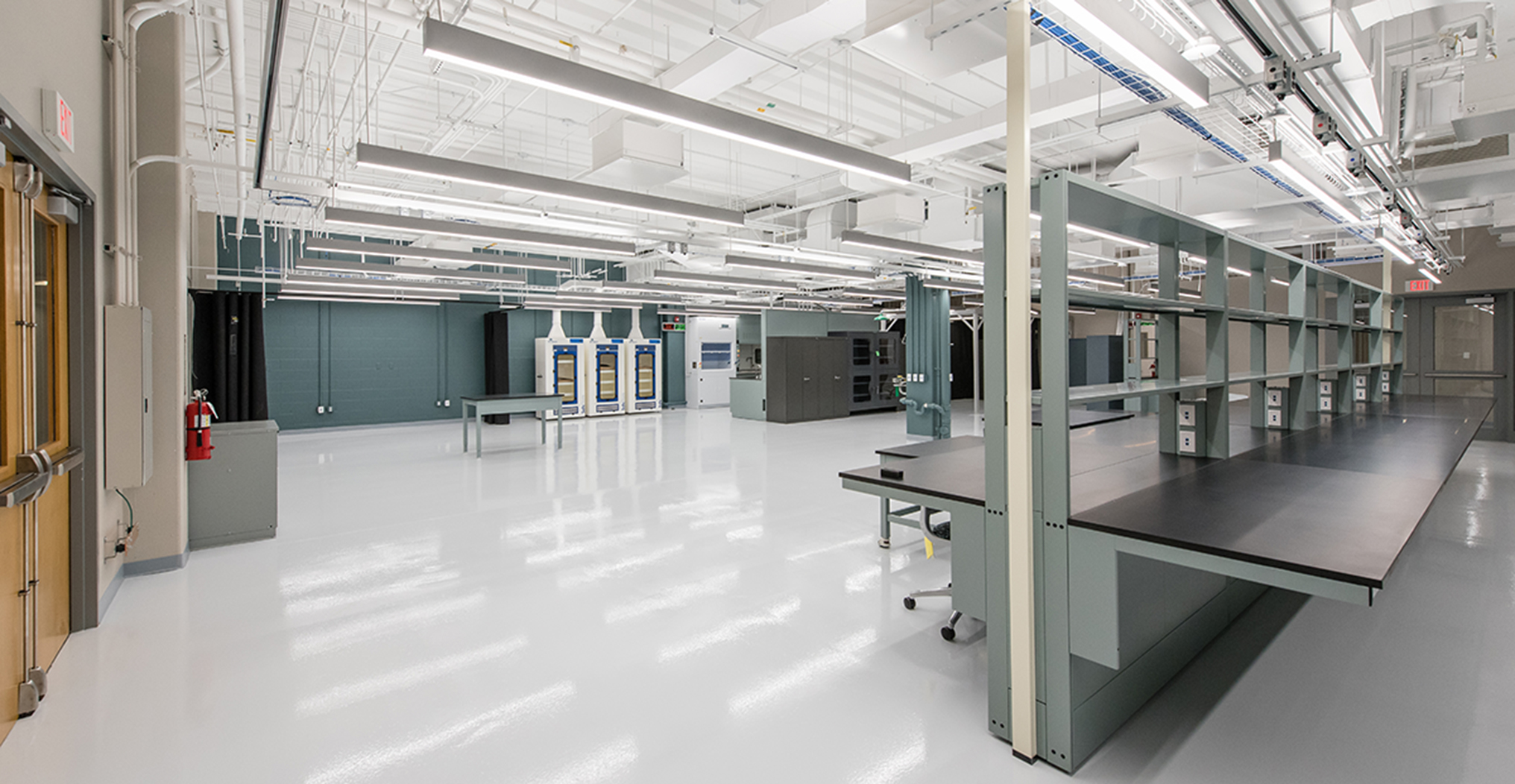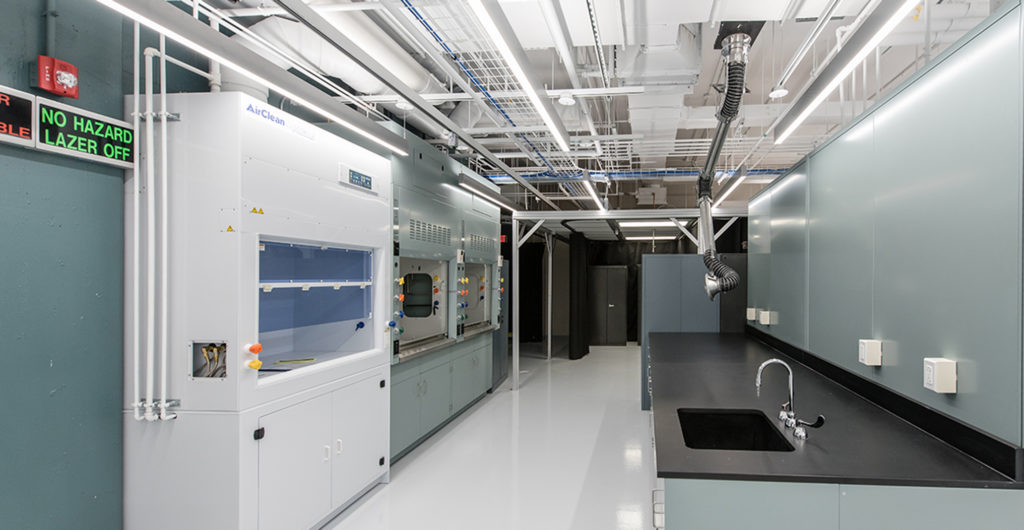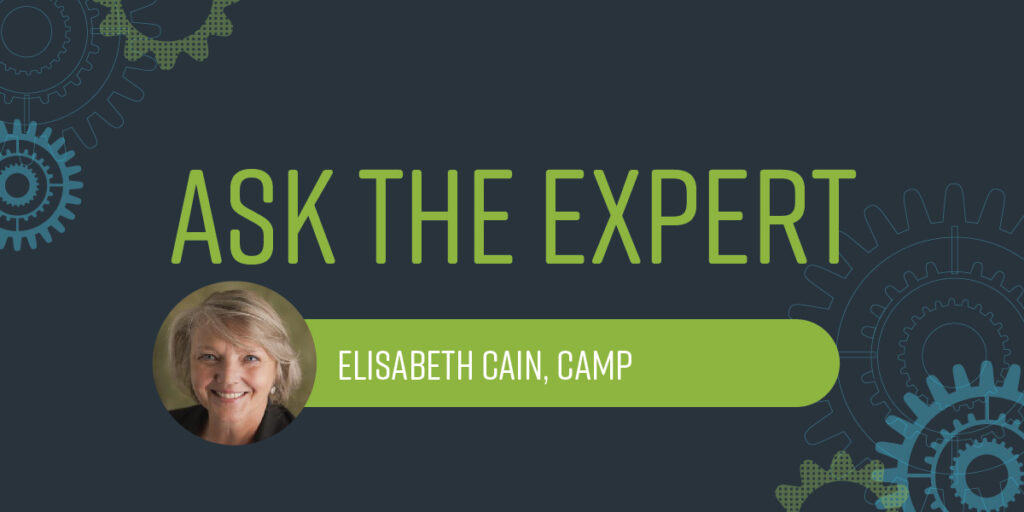In this edition of Ask the Expert, we speak with Elisabeth Cain, Business Development Manager at Clarkson University’s Center for Advanced Materials Processing (CAMP), one of 15 NYSTAR-funded Centers for Advanced Technology (CATs). Her role is to bring researchers and companies together and they tend to the relationship as it grows.

Please tell us about CAMP and its mission.
CAMP was established in 1987 because of Clarkson’s very strong reputation and performance in particles, dispersions, and surface science, specifically chemical mechanical planarization (CMP). We’ve had four performance-based contract renewals as a CAT since then. We’re still engaged in CMP, but CAMP, in general, engages in research collaborations with New York companies ranging from startups to global manufacturers. We help them achieve their R&D goals, specifically around advanced materials design and processing. Our mission is to achieve excellence in applied research and provide manufacturers with the expertise to improve their products and materials performance—to solve manufacturing challenges while at the same time lowering costs and the risks involved.
It’s really about promoting economic development. We work throughout the state with MEP partners, economic development partners, innovation centers, and other NYSTAR-funded research institutions. Over the past decade, CAMP has helped New York State companies achieve $245 million in self-reported economic impact. We also help to create and retain jobs with the work that we do.
What do you do as Business Development Manager?
My role is to bring together the right university researcher with the company that needs that particular expertise. Once I’ve facilitated the meeting, my role becomes about stewarding the relationship. That is very critical because building these relationships takes a lot of time and a lot of nurturing. We work with companies of all sizes, and their needs vary greatly. You need to think about what the company needs and how you can help them over the next obstacle.
Very often, the cost is the biggest hurdle – and that is where we, as a NYSTAR-funded CAT, can provide a very significant advantage. We can apply NYSTAR matching funds, and we offer a very low overhead institutional rate for our collaboration. For those who really don’t have any money, we can help them with other things, such as grant applications or other resources, or a referral to NY MEP or another New York State asset. We are part of a network to help these companies succeed.
What do you like best about your job?
Truly, the most fascinating and satisfying aspect of this position is learning about the products. Learning how things are made and the research that goes into developing them is mind-blowing. I visit these manufacturing sites and I watch these processes and I often marvel at the knowledge, the capabilities, and the vision these companies have, and that Clarkson researchers have, in order to understand the problem, in order to improve, and innovate. Plus, the relentless determination and focus of these teams to make a successful collaboration is really inspiring.
These relationships are not one-offs. The most fun ones start off with “Can you do this?” and we say “Yes”, and then it comes to the point where they say “Wow, I didn’t think about this solution”. Then these relationships grow over time and all of a sudden you see this new energy. These ideas come to life, and that is the best.
Tell us about your background and what brought you to CAMP.
I call myself a global citizen. Nationality-wise and in terms of where I’ve lived, I’ve been all over the globe. My parents are Austrian, I lived in the Middle East for the first part of my life, and then I came to the U.S. and got married.
I first got into business development by working for the Austrian trade commission in New York City. I was studying at NYU and wanted to do something, so I worked helping Austrian companies promote their products in the U.S. I did that for 15 years.
Eventually, I became a corporate relations officer at RPI in Troy, New York. I helped companies provide students with scholarships and fund research labs for RPI faculty. That was where I got the first taste of what is possible in academia. During that time, I organized many corporate visits focused on technology transfer and technology road mapping, so I learned about the objectives and the perspectives that exist in industry-academic collaborations
When the job at CAMP opened up in 2015, I saw a great opportunity to work with New York State companies and facilitate collaborations with Clarkson researchers. Before joining RPI, I was Assistant Director of Alumni Relations at Clarkson, so I already had a good idea of Clarkson’s research capabilities and its reputation. While working at CAMP, I became really interested in economic development. In 2017 I took a course with the International Economic Development Council, and I just loved it. So, I enrolled in the IEDC Economic Development program and took all of their courses. That provided some great insight into the challenges and needs of the companies I’m working with while also highlighting available resources and best practices to find solutions. I think that made me a more qualified professional to help these companies.
 Why should manufacturers work with CAMP and what should they expect?
Why should manufacturers work with CAMP and what should they expect?
If companies need scientific or technical solutions that they are not set up to tackle in-house, or if their R&D department just wants to outsource them, a university-based research center like CAMP is an incredibly cost-effective solution. Because of our low overhead costs, plus the additional savings companies get through cost-sharing, those research projects really do become feasible. They become possible.
Also, engaging with experts at a research university brings a whole new level of creativity and a really innovative approach to finding solutions to research problems. That is really critical for discovery and innovation. If you work in a lab at a company, you may be driven but certainly, you have limitations such as budgets and time constraints. Our researchers are in the lab looking at all of these things and asking, “What if we did this? What if we did that?” Suddenly doors open up and it’s a luxury I don’t think most companies have. Working with universities where the research is conducted by students under the supervision of faculty is a great way to stoke the fire if you will.
It is also a way to scout future hires. The students are here 24/7, so they can really play around with these materials. They see things, they find things, and they report things. There is a great exchange between the students and the company. What better way to get to know a person you might want to hire who has the expertise you need because they are working on your product anyway? So, if a company has an ongoing collaboration with us, it is a veritable recruitment pipeline for qualified workers for years.
One thing that manufacturers must understand is the importance of managing expectations in working with universities. That is very critical. Universities are not run like businesses and industry must adapt to some academic idiosyncrasies. It has to do with student availability and student funding and all of that has to be managed by the principal investigator, or PI, and the whole work schedule has to be managed around the academic calendar. We are actually pretty good at this. Our faculty really do try to accommodate industry. We are also a smaller university so that makes it a bit easier for us to manage things. We just have to make it very clear that even with the deliverables we are ready to provide, we are still an educational institution. We are not a contract manufacturer. If you understand that, the value is great.
Can you share some examples of successful collaborations?
The most rewarding experiences have come from collaborations that really surprise our sponsors because of the ingenuity and the practical applicability. I remember some cases where companies called me and told me they were really frustrated. They had been looking for a solution to this problem for years and they didn’t think we could assist, but could we maybe help them? And in at least two of those cases, we came through. And that’s fantastic. It’s really fun because it puts a smile on everybody’s face.
Most of these research collaborations are hidden, they are buried, and you don’t see them. But part of the fun of the job is that once in a while there are things that hit close to home. One is a new project with Estée Lauder on Long Island. They are funding a project to develop advanced sunscreens that you don’t have to reapply over the course of the day because sunscreen normally degrades. One of our researchers at Clarkson who works with metal-organic frameworks came up with the technology solution. So, in the future, you may not have to remember to reapply it. Another is a product that is already on the market called XRCEL, a sports drink that includes smart microparticles developed at Clarkson that gradually deliver nutrients to athletes to increase performance. Those are really nice examples of applied research.
CAMP started with Chemical Mechanical Planarization. What is the status of that work?
The researchers here at Clarkson are very busy working with national and international companies to come up with new technologies that address the needs of the growing microelectronics market, so we are still in the middle of CMP work. I believe that with Clarkson’s capabilities in this area and the emerging research areas that are related to the use of CMP technologies, CAMP will continue to play a leading role in this area. It is a central part of our historical identity, and our future identity as well.

